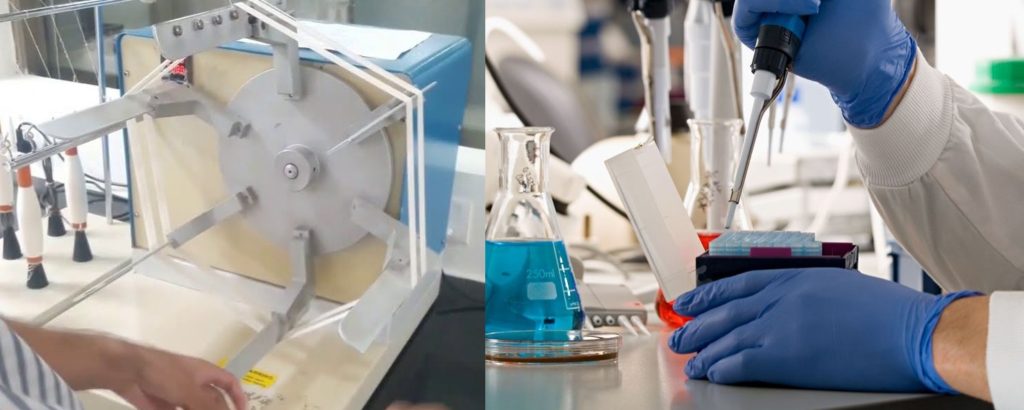
Testing is a method for examining different parameters. Textile testing is some kind of testing method that is used to control the quality of textiles. Final garments come from different textile processes. Every textile processing facility needs quality processing goods. As a result, testing is essential for every stage of textile processing. These types of textile testing help us control parameters.
Here, textile testing is normally divided into two types for factory-level use. These two types of textile testing are stated below:
- Physical test methods.
- Chemical test methods.
List of physical test methods:
This is a physical parameter-checking method. So that, we can check a physical condition by this method.
- Dimensional stability to washing/dry cleaning
- Appearance after wash/dry cleaning
- Spirality/Twisting
- Print/Motif Durability
- .Colorfastness to washing/dry cleaning
- Tensile Strength
- Colorfastness to rubbing/Crocking
- Tear strength
- Colorfastness water
- Tear strength
- Seam strength
- Seam slippage
- Bursting strength
- Pilling Resistance (ICI Box/Martindale)
- Abrasion Resistance
- Colorfastness to perspiration
- Snagging Resistance
- Colorfastness to light (up to Blue wool scale——–)
- Thread per Inch/Stitch Density
- Colorfastness to light and perspiration
- Yarn count
- Color Fastness to saliva
- Yarn twist
- Color Fastness to Chlorinated water/Pool water
- Fabric Weight
- Color Fastness to chlorine/Non-chlorine Bleach
- Yarn strength
- Color Fastness to hot press
- Fiber composition/Garment composition
- Phenolic yellowing
- Stretch and recovery
- If any others: ☐Button pull tensile force
List of chemical tests methods:
- pH Value Nickel spot
- Formaldehyde
- Odor test
- PVC(Polyvinyl Chloride)
- Corrosion resistance
- COC(Chlorinated Organic Carriers)
- Phthalates
- DMF (Dimethylformamide)
- DMF (Dimethyl fumarate)
- PAH(Poly Aromatic Hydro Carbon)
- AZO Dyestuff test(Carcinogenic Amines)
Importance of textile testing:
The importance of textile testing cannot be overstated. In order to ensure the quality and safety of textiles, it is essential to conduct regular tests on fabrics and yarns.
- This helps identify any potential problems with the materials before they are put to use.
- Textile testing can also help determine the suitability of a particular fabric for a specific application.
- By making sure textiles are tested properly, companies can make sure their products meet the highest quality and safety standards.
- By putting fabrics through tests, we can find any flaws or problems that might affect how long they last or how well they work.
- This lets us figure out if the fabric is good for what it’s supposed to be used for.
- Poorly tested textiles may lead to decreased performance and even safety hazards.
- Properly tested textiles, on the other hand, can provide years of reliable service.
Conclusion for Types of Textile Testing:
Textile testing plays a critical role in ensuring the quality, safety, and performance of textile products. The two main types of textile testing, physical and chemical, help to control various parameters throughout the textile processing stages. By conducting regular tests on fabrics and yarns, manufacturers can identify potential defects and ensure that their products meet the highest standards. Overall, textile testing is an essential practice in the textile industry that cannot be overlooked.
Research link:
You may read some other articles
- Most Applied SOP For Sewing Department In Textile Industry
- Most Useing Dyeing Process In Textile-100% Applied For Knit Fabric Updated 2023
- What Is Color Fastness In Textile? | 16 Types | Methods | Importance